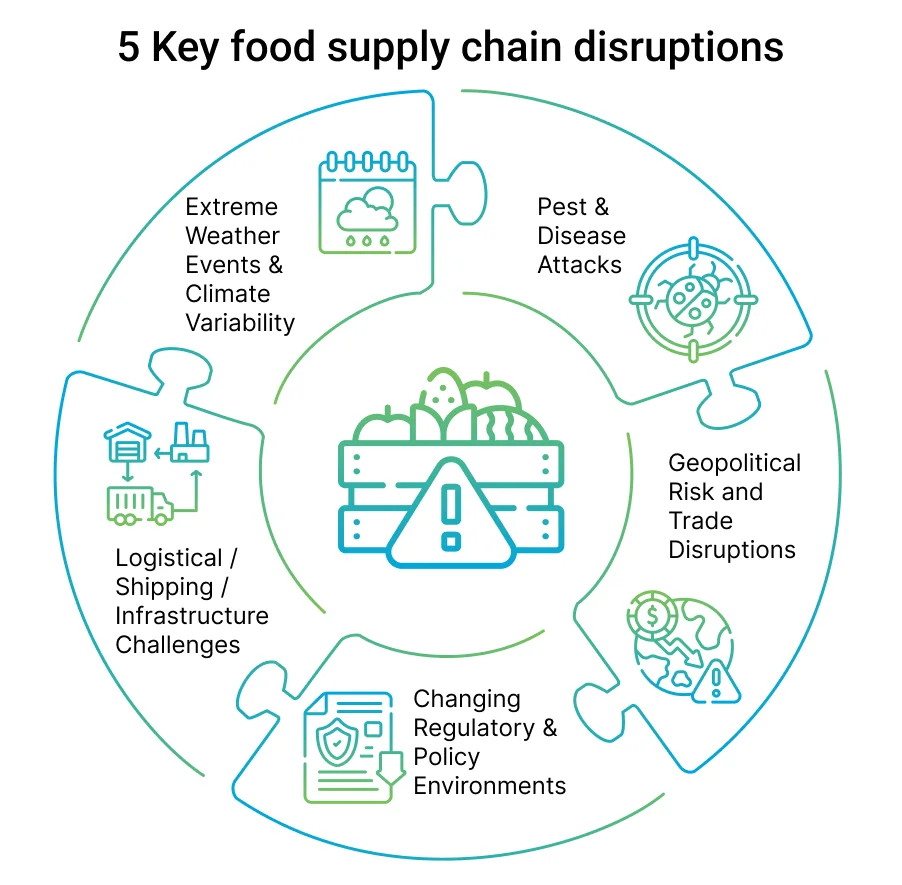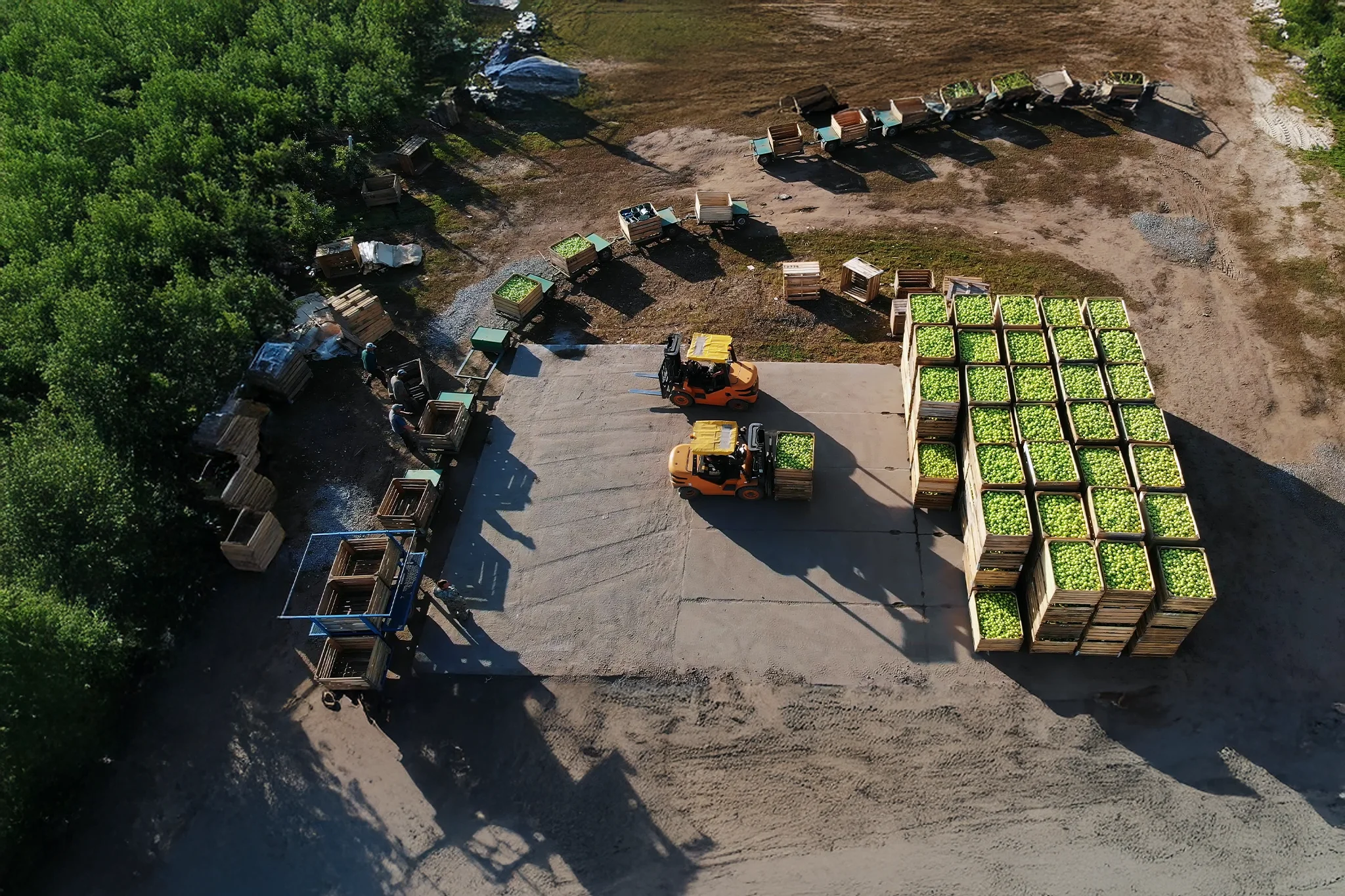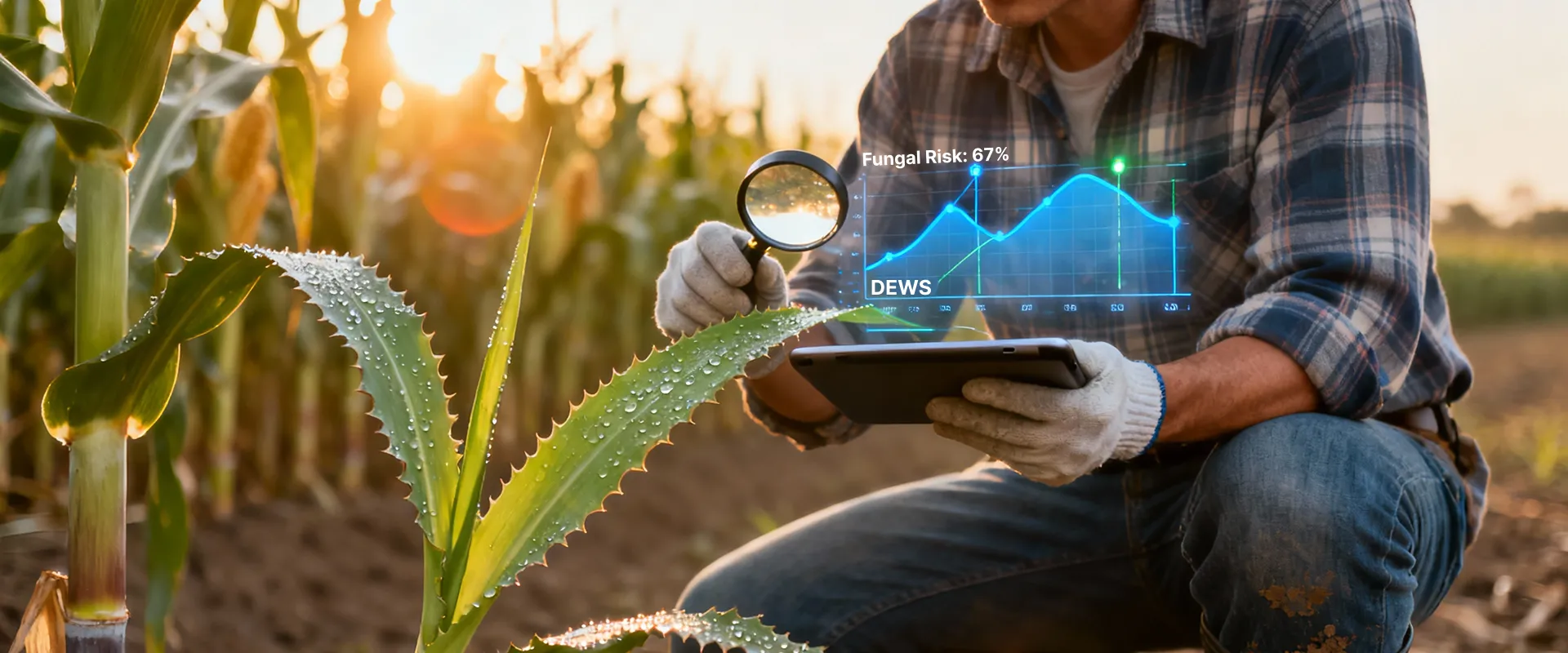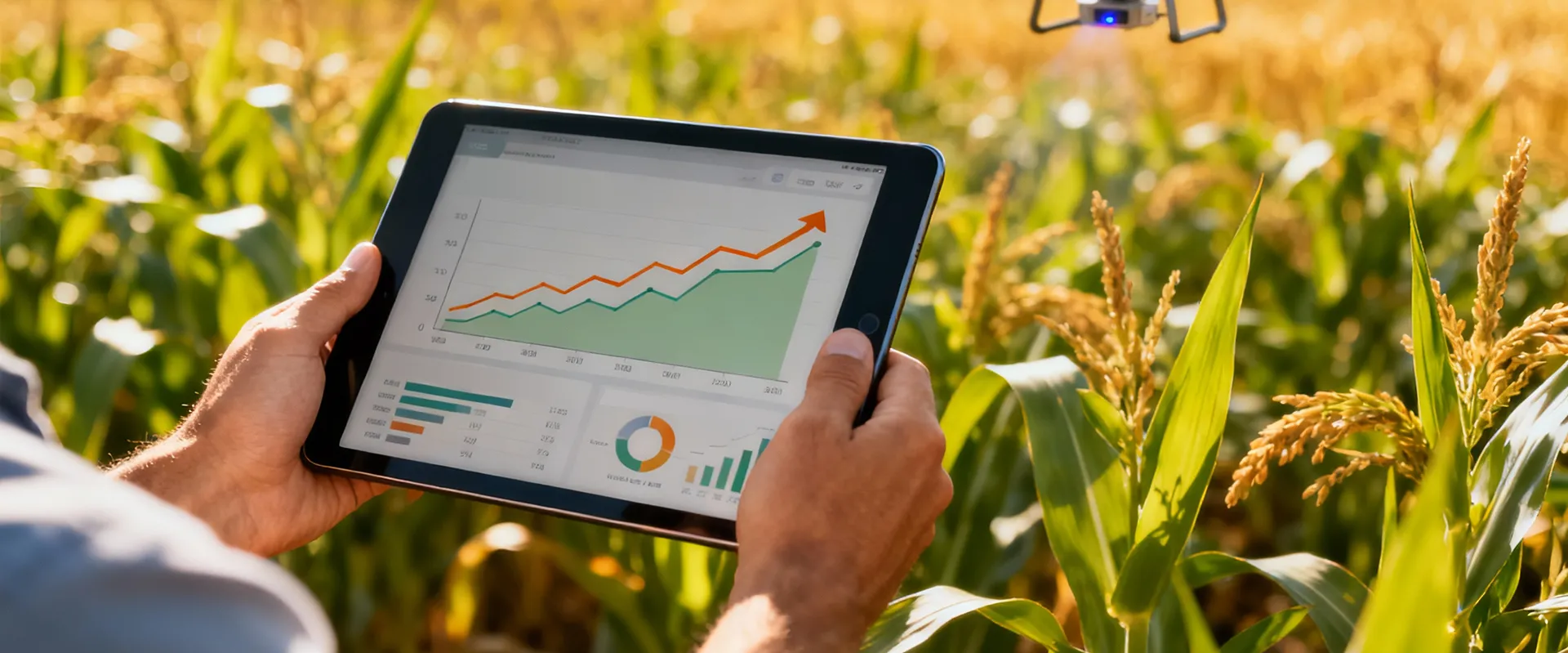Synopsis:
Key drivers of food supply chain disruptions

1. Extreme weather events & climate variability
2. Pest & disease attacks
Outbreaks of pests or pathogens can devastate value chains. Today’s climate change chaos has aided the spread of diseases and pests. For example, in recent years, the cocoa value chain has seen disease pressures that not only cut yield but disrupted supply, raised prices, and harmed downstream players. Globally, up to 40% of crops are lost each year to pests/diseases, costing the global economy hundreds of billions annually.
3. Geopolitical risk and trade disruptions
4. Changing regulatory & policy environments
5. Logistical / Shipping / Infrastructure challenges
The costs of these disruptions
- Revenue losses: Companies face missed harvests, lower yields, or the inability to fulfill long-term contracts.
- Cost pressure: Businesses must reroute shipments, pay premiums for alternate sourcing, and cover losses from crop failures.
- Food waste / quality loss: Perishable goods spoil in transit; poor quality leads to consumer rejection; and logistics delays degrade freshness and shelf life.
- Forecasting failures: Mismatches in demand and supply lead to either costly overstocking/waste or sudden, damaging shortages.
- Impacts on governments & societies: At a national level these disruptions can in no time lead to food insecurity, inflation in staple prices, and pressure on government budgets. There emerges a pressure on imports, and a risk of civil unrest or health crises.
How Cropin helps solve 4 of the 5 disruptors
1. Countering extreme weather & climate variation
- Cropin’s approach: We enable climate smart agriculture (CSA) practices, regenerative agriculture transition, and continuous farmer advisories through enhanced monitoring and forecasting tools. Cropin platform offers accurate intelligence about weather, soil, and climate trends so decision makers (farmers/retailers/CPGs) can adapt proactively.
- The Intelligence: Cropin Cloud, our real-time ag-intelligence platform, uses grid-based mapping powered by Google Gemini to deliver climatic, soil, irrigation, and growing-condition data at fine spatial scales. This helps seed manufacturers, food processors, governments, and retail businesses to future proof their procurement strategies.
- The Proof: With 30 million acres digitized and nearly one billion acres monitored worldwide, the scalability of the Cropin Cloud platform gives seed manufacturers, food processors, governments, and retailers the strongest possible climate risk coverage, enabling proactive strategic planning.
2. Mitigating pest & disease attacks
Pest and disease outbreaks can destroy up to 40% of global yields, making early intervention critical.
- Cropin’s approach: We implement disease early warning systems (DEWS), indicating the probability of disease occurrence up to 15 days in advance. Our AI-based model integrates crop science; past and forecasted weather attributes like temperature, humidity and precipitation, remote sensing and historical field data to predict disease. To ensure near real-time data our satellite monitoring capabilities monitor crop health across regions.
- The Intelligence: The platform delivers advisories directly to field officers, ensuring proactive action before an outbreak becomes systemic.
- The Proof: Cropin’s collaboration with major retailers, such as Walmart, focuses specifically on monitoring crop health and forecasting seasonal transitions so that fresh produce supply chain risks including those from diseases are detected and mitigated at the earliest possible stage.
3. Navigating geopolitical risk & trade disruptions
- Cropin’s approach: We provide regional intelligence and scenario simulation tools (utilizing Gen AI) that allow companies to quickly assess and shift sourcing or production. The platform enables faster decision-making and the ability to rapidly replicate successful practices in different, less volatile geographies.
- The intelligence: Our sage platform uses a combination of historical, real-time, and predictive data to help businesses understand which growing regions remain viable under severe trade or climate disruption, allowing for the establishment of resilient alternative supplier networks.
- The Proof: Cropin’s customer footprint spans 100+ B2B customers across many geographies, providing the foundational data and expertise necessary to map risk and enable effective, diverse sourcing strategies on a global scale.
4. Ensuring compliance with changing regulatory environments
- Cropin’s approach: We offer comprehensive traceability tools, supply chain transparency, monitoring of input usage, and compliance modules, all integrated into digital monitoring, reporting, and verification (dMRV). Organizations can define, structure, and quantify greenhouse gas emissions and soil carbon sequestration.
- The intelligence: Our open ecosystem platform, built upon farm-level intelligence, includes validation models for tillage, cover crop, deforestation analysis, carbon footprint analysis and more. Our platform helps you to seamlessly integrate required data from other sources.
- The Proof: Our solutions directly help large retail and food partners meet complex regulatory and ESG requirements. The platform’s granular pin-code level mapping confirms compliance around origin of produce, soil usage, and irrigation practices, deforestation, instilling consumer and regulator confidence. Cropin’s unbiased dMRV facilitates validation of your compliance with environmental regulations and standards. With our API outputs and customized BI dashboards, you can adhere to all compliance and regulatory norms with ease.
How cropin is transforming agriculture with AI: Real-world impact
Cropin’s AI-powered solutions are helping businesses and farmers tackle these challenges head-on. Here’s how Cropin’s AI-powered solutions are driving measurable impact across continents and different industry segments:
Future-proofing fresh produce supply chains with walmart
Challenge:
Cropin's solution:
In partnership with Walmart, we deployed our cutting-edge AI-powered platform to enhance forecasting, crop monitoring, and sustainability efforts across Walmart’s fresh produce supply chain.
Impact:
- Enhanced forecasting: Improved yield forecasting and seasonal transition predictions.
- Sustainability efforts: Monitored crop health to support sustainable sourcing practices.
- Operational efficiency: Streamlined supply chain operations, reducing waste and improving reliability.
Climate smart agriculture with ADPC
Challenge:
Cropin's solution:
Impact:
- 90% Adoption rate
- 92% Farmer satisfaction rate
- 30% Increase in crop yields
- 23% Reduction in crop loss
- 65,000 SMS-based farming advisories sent
- Empowered 8000+ farmers
Sustainable sourcing with Loacker
Challenge:
Cropin's solution:
Loacker partnered with Cropin to digitize its hazelnut value chain, implementing farm digitization and traceability solutions.
Impact:
- Digitized operations: Digitized over 16 million acres of farmland.
- Return on investment: Achieved a threefold increase in ROI.
- Quality control: Enhanced traceability and quality assurance across the supply chain.
Early pest and disease warning with Space4Good
Challenge:
Mitigating crop loss due to pests and diseases, which can lead to significant yield reductions.
Cropin's solution:
Space4Good collaboration with Cropin, developed ‘CropLens’, an early warning system for pests and diseases in rice paddies.
Impact:
- Early detection: Provided real-time alerts for pest and disease outbreaks.
- Resource optimization: Reduced fungicide expense by 15%. Reduced use of pesticides minimized environmental impact.
- Farmer support: Empowered farmers with timely information to protect their crops.
- Productivity: 20% increased productivity







